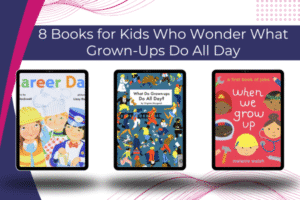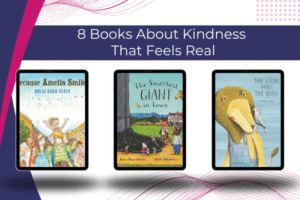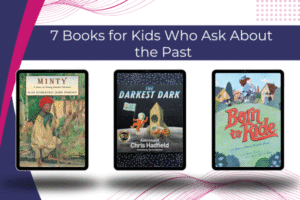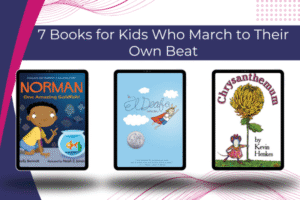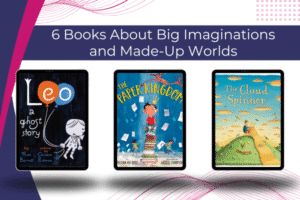If your young reader is fascinated by germs, cells, tiny creatures, or science in general, this list is for them. Books about the microscopic world help kids understand big ideas from tiny perspectives. These books answer questions like “What’s living on my hands?” or “Why do I get sick?”—all in fun, approachable ways. Whether you’re a teacher looking to spark scientific curiosity or a parent with a science-loving child, these books bring the invisible world to life with humor, facts, and fascinating visuals.

1. Do Not Lick This Book by Idan Ben-Barak
This hilarious and interactive book follows a microbe named Min on a journey across everyday surfaces. With real microscope photography and quirky narration, kids learn where germs live and how they spread. Min meets other microscopic friends along the way, offering a fun mix of fiction and fact.
The book uses humor and simplicity to teach serious concepts without being overwhelming. Its interactive style, including prompts to “touch” parts of the page, keeps young readers fully engaged. This is a perfect choice for sparking conversations about hygiene in a non-scary way.

2. Tiny Creatures: The World of Microbes by Nicola Davies
This beautifully illustrated nonfiction picture book explains microbes in a gentle and engaging way. It shows how these invisible organisms live in water, air, and even in our bodies. The story walks readers through how something too small to see can still change the world.
The language is clear and simple, making big science concepts easy for kids to grasp. The illustrations have a charming, almost vintage style that appeals to both children and adults. It’s ideal for quiet reading time or as a classroom resource to introduce biology.

3. A Germ’s Journey by Thom Rooke
Follow a germ as it moves from place to place, infecting people along the way. The story is simple but clear, showing how diseases spread and how to stop them. The visuals make it easy to understand without being scary.
It’s written in a way that helps children visualize the life cycle of a germ and their role in stopping its journey. The book also includes hygiene tips that are presented in a light, accessible tone. A great tool for reinforcing hand-washing and health awareness in younger children.

4. Inside Your Insides by Claire Eamer
With playful art and kid-friendly explanations, this book dives into the microbiome—the bacteria that live inside us. It balances humor with science and gives kids a deeper look into how we depend on microbes. Think of it as a beginner’s guide to the invisible life in your body.
The writing style is casual and filled with fun facts that make the information feel like a discovery rather than a lesson. It also explains how gut bacteria influence everything from digestion to mood. Perfect for curious readers who like to know how things work from the inside out.

5. The Bacteria Book by Steve Mould
This is a high-energy guide to bacteria, viruses, fungi, and other microbes. With bold visuals and fast facts, it’s perfect for kids who enjoy trivia-style learning. It covers both helpful and harmful microbes in a way that is clear and captivating.
The layout feels more like a magazine than a textbook, making it highly appealing to reluctant readers. It also includes weird-but-true facts that keep kids flipping the pages. Ideal for kids who love asking “Why?” and enjoy exploring science beyond the basics.

6. You Wouldn’t Want to Live Without Bacteria! by Roger Canavan
Part of the “You Wouldn’t Want to…” series, this book uses humor and silly illustrations to teach how bacteria help keep us alive. From digestion to farming, it explores the benefits of bacteria in everyday life. Kids will laugh while they learn just how much we rely on microscopic life.
It turns what might seem like a gross topic into something surprisingly fun and positive. The exaggerated cartoon art adds a playful touch, making it a hit with visual learners. This book is great for changing the way kids think about germs—showing they’re not all bad.

7. Cells: An Owner’s Handbook by Carolyn Fisher
Written as if cells are talking directly to the reader, this book turns cell biology into a fun conversation. It explains parts of the cell, what they do, and why they matter—all with lots of personality. Ideal for kids who are ready for a slightly deeper look at biology but still want it explained in a fun way.
The design is bright and playful, and each part of the cell introduces itself with attitude and humor. It works well as a bridge between picture books and more advanced nonfiction. Perfect for budding scientists who enjoy storytelling mixed with facts.

8. It’s Catching: The Infectious World of Germs and Microbes by Jennifer Gardy
Dr. Gardy, a real scientist, walks readers through how viruses and bacteria spread, mutate, and sometimes save lives. The book is honest but reassuring, giving real science in an easy-to-digest format. Perfect for older elementary or middle-grade readers interested in real-world science with colorful illustrations.
It covers topics like how vaccines work and what pandemics are, but in a way that is always age-appropriate. There’s a good balance between fun visuals and serious information. Great for curious readers who ask big questions about health and how the world works.
Want a FREE children’s book?
Hey! I’m B.C. Stephan the one who put this free site together for fun.
I’m also a children’s book author and I’m trying to build a community of not just parents and teachers, but also people who just love to learn about our world and want to make a positive impact.
So I would love it if you joined the newsletter.
I’ll even bribe you with a free copy of my eBook The Best Worst Day Ever… 😉


